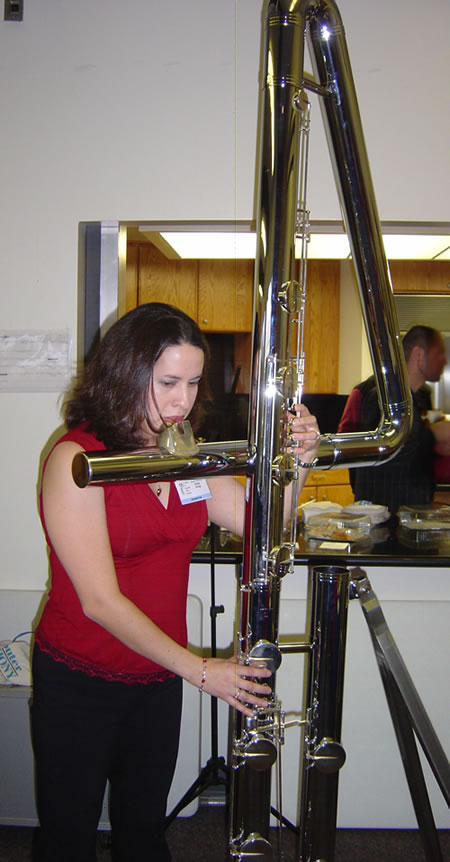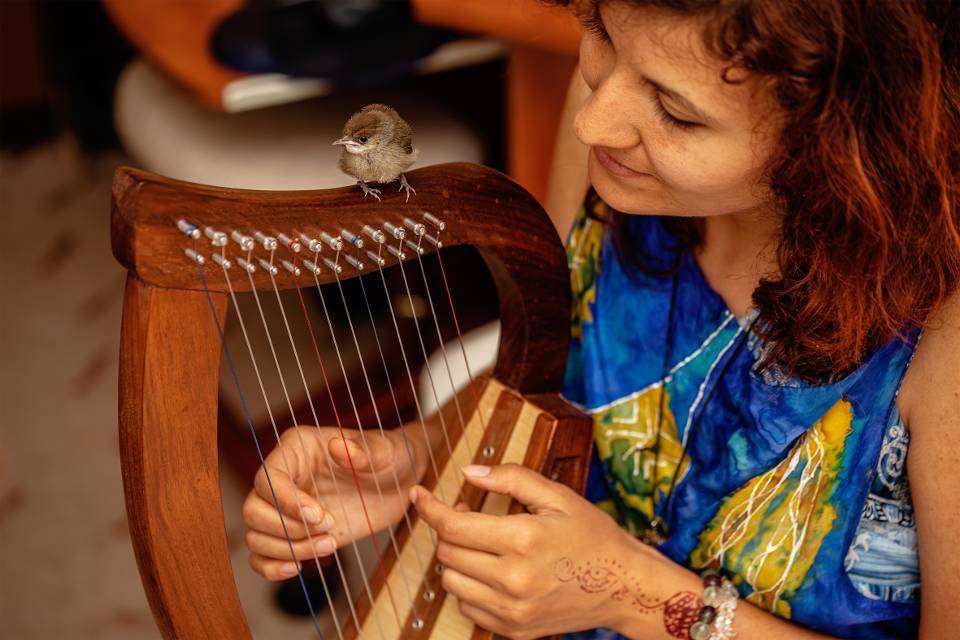Contents
What Is The Double Contrabass Flute?
This flute is also referred to as the octobass flute and is considered as the world’s biggest metal flute and with the lowest pitch as well. We know that the hyperbass is bigger and has a lower pitch, but it is not made out of metal, instead PVC pipes and wood are used.
The double contrabass flute is 8 feet tall, has tubing of up to 22 feet and weighs about 30 pounds. This means that this giant of an instrument easily outsizes most of its counterparts. Excluding the hyperbass flute, some of its closest opponents with regard to size and pitch, include the contrabass and the sub-contrabass flute that feature 9 feet and 11 feet of tubing respectively.

What Is Position Of Contrabass Flutes In The Flute Family?
The flute has a big family. It is generally composed of 12 members namely piccolo, treble, soprano, concert, flute d’amour, alto, bass, contra-alto, contrabass, sub-contrabass, double contrabass and the hyperbass flute. This is an arrangement in descending order from the smallest to the largest. The ability of flutes to cover the complete range of a piano keyboard makes them quite reliable. The highest pitched member of the flute family is the piccolo while the lowest is the hyperbass flute. Our focus will however will be solely on the double contrabass flute.
How Does It Sound?
Whereas the normal bass flute is a single octave lower than the concert flute, the double contrabass is one octave lower than the contrabass flute, two octaves lower than the normal bass flute and three octaves lower than the typical concert flute. The flute is pitched at C with the lowest note being the C1. To play this flute, you would need to make your mouth bigger and looser. This is because you will need to blow in a lot of air to get the desired sound.
The flute may be easy to learn but the effort required to generate the sound is far greater than the piccolo or the concert you are used to. Constant breaks in phrasing are a consideration that writers and composers for this gigantic flute need to make to ensure an easy time when playing. The great size of this instrument makes the response very slow. A common technique used with this flute is beat boxing. This technique helps to generate a much louder sound but limits the true capability of this flute.
The sound produced by this flute can be quite powerful when amplified. It can be described as soft, warm and lacking a bit of clarity. The flute produces deep bass sounds often sort in orchestras. Flutists who play this flute usually do it while standing. This is mostly because of the massive size of the instrument. If the flutist has to sit down, then a tall stool will be used so that he or she is able to reach the embouchure hole with relative ease.
What Material Is It Made Of?
The flute is composed of two versions: the brass version and the PVC version. The brass version includes the likes made by Kotato while the PVC version was made by Jelle Hogenhuis, an instrument maker from the Netherlands. The PVC version may seem cheap but it does have some benefits over the brass version. For example, it has a wider bore, it is lighter and because it is made out of PVC pipes, they can be made at a faster rate and at lower prices. Moreover, you will be able to get a broad tone.
Where Can I Find One?
The Kotato and Fukushima firm in Japan is one of the most notable producers of this flute. This firm makes flutes in almost every range of sizes. They produce the soprano flute in F, the C and F key bass flute, the C contra bass flute and of course the spectacular double contrabass flute. Our big bass flute is however not produced in large numbers making them rare and therefore most people do not own them.
During the 90’s and early 2000’s the only way you could try out this instrument was to make a journey to Tokyo and meet up with the famous flute maker Mr.Kotato or you could instead fly to Germany to try the other one which he had made for his representative there. Despite all those years, the instrument still remains limited in availability. As a matter of fact, there are only 4 Kotato double contrabass flutes in the world right now.
See more: Top 5 Best Flute Brands in the Market
How Much Does It Cost?
The uncommonness of this flute makes them quite expensive. In fact, almost all the metal bass flutes are expensive. To get a good bass flute, you will need to have at least $10,000 and above. The bass flute in C crafted by Kotato will cost you $13,600 while the bass flute in F costs $21,300. When you go to the much larger ones such as the contrabass and the double contrabass, then the price will sky rocket. The contrabass flute will cost you around $24,000 while for the double contrabass you will have to part with $40,000 or more.
See more: How much do other flutes cost?
Where Is It Used?
Although this great flute can be used as solo instruments, it is best used in flute choirs, orchestras, concerts, ensembles or film scores. This is because it enables the flutists to play even the lowest notes of an orchestral instrument. When played in such special occasions, it is always best to keep them at the back because of their enormous size. However, this may reduce their sound impact and hence the reason they are amplified.
See contrabass flute solo by Jeroen Goossens
Conclusion
Double contrabass flute was developed due to the need for a much lower range instrument. So far, it has lived to its expectations and most flute choirs are thankful for them. Their large size may seem intimidating at first but with time one is able to learn and incorporate them into the choir.
The fact that this flute is a rare piece of musical instrument is quite discouraging to anyone who wants to learn them in future. But we hope that as time goes by, more and more will be produced thereby enabling even the small community-based choirs to own them.






